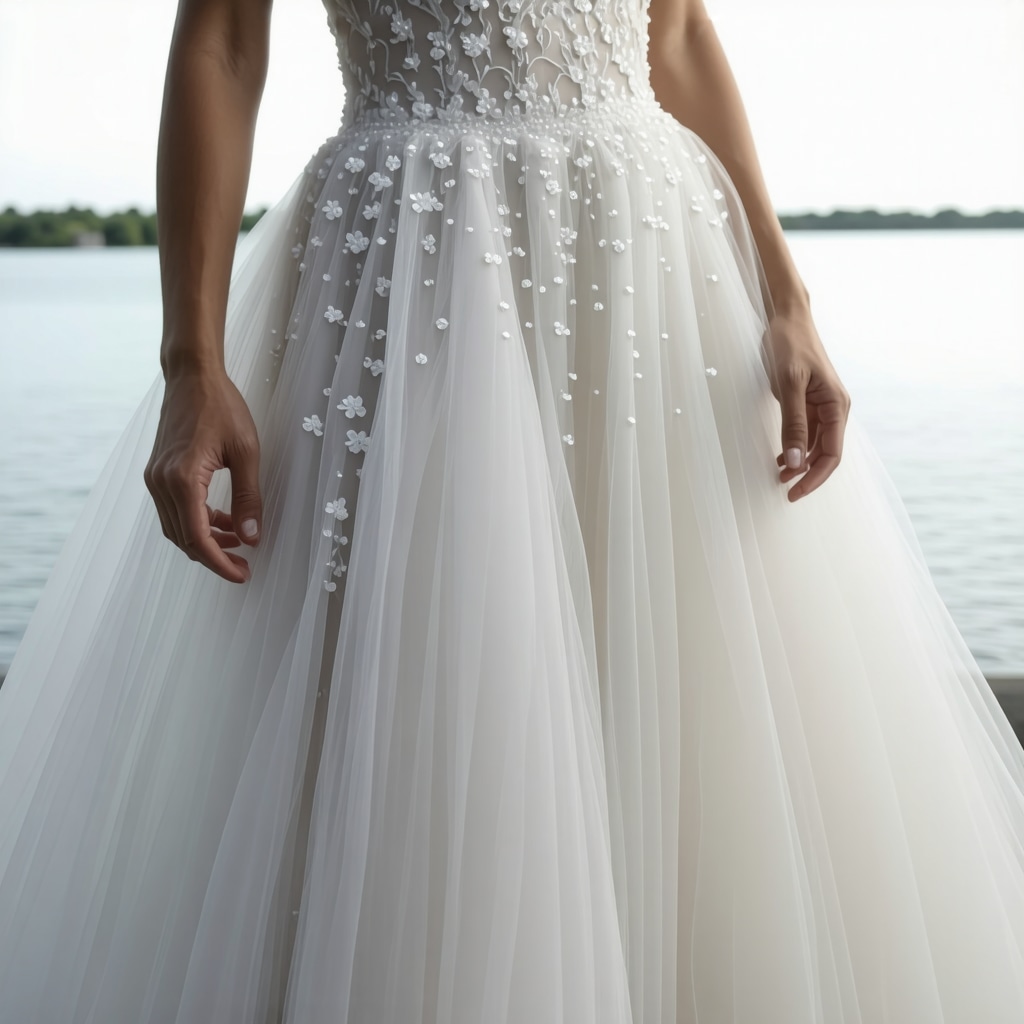Unlocking the Secrets of Wedding Gown Preservation in Tampa
Your wedding gown is more than just a dress; it’s a cherished keepsake that holds memories of one of the most significant days of your life. In Tampa, where humidity and environmental factors can accelerate fabric deterioration, preserving your wedding dress with expert care is essential to keep it pristine forever. Understanding the nuances of gown preservation ensures your beloved dress remains as radiant as the day you wore it.
Why Tampa’s Climate Demands Specialized Wedding Gown Care
Florida’s subtropical climate, particularly in Tampa, presents unique challenges for fabric preservation. High humidity and fluctuating temperatures can lead to mold, mildew, and yellowing of delicate fabrics. This makes professional preservation services not just a luxury but a necessity. Tampa brides benefit immensely from tailored methods that mitigate moisture damage and maintain fabric integrity over decades.
How Does Professional Wedding Gown Preservation Protect Your Dress Long-Term?
Professional preservation starts with meticulous cleaning to remove invisible stains, oils, and residues that can cause fabric degradation over time. Experts use museum-quality techniques involving gentle, solvent-free cleaning agents that are safe for delicate lace, silk, and tulle. After cleaning, the gown is carefully packaged in acid-free materials designed to breathe yet shield from light and pollutants, significantly extending the dress’s lifespan.
One Tampa bridal gown preservation service noted for its excellence is detailed in this guide on museum-quality wedding gown preservation in Tampa Bay, which outlines methods that ensure your dress remains flawless for generations.
Beyond Cleaning: Storage Solutions That Make a Difference
Proper storage is as critical as cleaning. Tampa brides should store gowns in climate-controlled environments to avoid humidity-related damage. Avoid plastic bags that trap moisture; instead, opt for breathable garment bags or specially designed preservation boxes. Position the gown flat when possible to prevent stress on seams and fabric. These expert recommendations have been proven to preserve the original texture and color of bridal gowns remarkably well.
Preservation as an Heirloom: Passing Down Beauty Through Generations
Wedding gowns preserved correctly can become treasured family heirlooms, each with its own story and sentimental value. Tampa brides often choose preservation services that emphasize archival standards, ensuring the dress’s beauty endures beyond their lifetime. These services incorporate acid-free tissue paper and UV-protective storage solutions that safeguard the gown’s delicate embellishments and fabric.
Expert Tips for Tampa Brides: What to Know Before Preservation
Timing is crucial. Ideally, have your gown cleaned and preserved within six months after your wedding to prevent stains from setting. Discuss fabric types with your preservation specialist to customize cleaning methods. Be wary of DIY approaches that use harsh chemicals or improper storage materials, which can accelerate deterioration rather than prevent it.
For Tampa brides seeking trusted expertise, this resource on bridal gown preservation secrets for Tampa weddings offers invaluable insider advice on maintaining your gown’s perfection.
Engage with Us: Share Your Wedding Gown Preservation Journey
Have you recently preserved your wedding gown in Tampa? Share your experience or questions in the comments below to help others protect their treasured dresses. Your insights could be the key to preserving another bride’s gown flawlessly.
Personal Experiences with Tampa’s Wedding Dress Preservation Challenges
Reflecting on my own journey preserving a wedding gown in Tampa, I quickly realized that the city’s humidity can be a formidable adversary. I was initially tempted to store my dress in a standard plastic bag, thinking it would protect it from dust and damage. However, after reading up on expert advice, including insights from museum-quality preservation guides in Tampa Bay, I learned this could trap moisture and lead to yellowing or mildew. Switching to acid-free tissue paper and a breathable box made all the difference, and it’s a decision I’m so grateful for now.
Choosing the Right Preservation Service: What I Learned the Hard Way
Not all preservation services are created equal. My first attempt at DIY cleaning involved a mild detergent and a lot of anxiety — and frankly, it wasn’t enough. Professional preservation specialists in Tampa utilize solvents and techniques designed specifically for delicate fabrics, ensuring no damage occurs during cleaning. This aligns with recommendations from the American Bridal Gown Preservation Association, which stresses the importance of gentle, solvent-free cleaning agents to keep fabrics like silk and lace intact for decades.
After entrusting my gown to a reputable local expert, I noticed the fabric felt softer and the color more vibrant — a testament to the value of professional care. If you’re curious about finding trusted experts, this guide on choosing professional wedding dress cleaners in Tampa offers a great starting point.
Ever Wondered How to Balance Eco-Friendly Practices with Effective Gown Preservation?
It’s a question close to my heart, especially living in Tampa where environmental consciousness is growing. I was skeptical at first about whether eco-friendly cleaning methods could match traditional solvent-based treatments. But after consulting with local preservation services offering green cleaning solutions, I was impressed. They use non-toxic, biodegradable products that protect both the dress and the planet without sacrificing quality. For brides prioritizing sustainability, eco-friendly wedding dress care in New Tampa is becoming a trusted choice.
Storage Tips That Truly Preserve Your Dress’s Beauty
Beyond cleaning, storage is where many bridal gowns either thrive or falter. Tampa’s climate means that even the best cleaning won’t protect a gown if humidity is allowed to infiltrate storage conditions. I personally invested in a climate-controlled closet space and used acid-free tissue paper to pad folds and prevent creasing. Avoiding plastic and direct sunlight has kept my dress looking fresh and prevented any unsightly discoloration.
How Do You Know When It’s Time to Preserve Your Gown?
Timing can be tricky. My advice: don’t wait too long after your wedding. Stains and oils that seem invisible at first can set deeply into fabric fibers if left untreated. Experts recommend preservation within six months of your big day to maximize effectiveness. This advice was reaffirmed in a local Tampa bridal gown preservation resource, which highlights how earlier intervention leads to better long-term results.
Let’s Keep the Conversation Going!
Have you had experiences preserving your wedding dress in Tampa? What challenges or surprises did you encounter? I’d love to hear your stories or answer any questions you might have. Sharing our journeys can help other brides make informed decisions and keep their gowns stunning for generations. Drop a comment below or explore more tips on bridal gown preservation secrets for Tampa weddings.
Innovative Preservation Technologies Elevating Tampa Wedding Dress Care
As preservation science advances, Tampa brides now have access to cutting-edge technologies that extend the lifespan of their wedding gowns beyond traditional methods. Techniques such as ozone treatment and vacuum-sealed archival packaging are gaining traction as they offer superior protection against microbial growth and oxidation, common culprits behind fabric discoloration in humid climates.
Ozone treatment, for example, is a non-invasive process that neutralizes bacteria and mold spores without introducing moisture or chemicals. This method is especially valuable in Tampa’s subtropical environment where humidity fosters microbial activity. Vacuum sealing, on the other hand, reduces oxygen exposure that accelerates fabric degradation, although it must be carefully managed to avoid compressing delicate embellishments.
What Are the Scientific Principles Behind Wedding Gown Fabric Deterioration in Tampa’s Climate?
Understanding fabric degradation at a molecular level can empower brides and preservationists to make informed decisions. High humidity increases water vapor in the air, which acts as a catalyst for hydrolytic reactions within natural fibers like silk and cotton. These reactions break down the polymer chains, weakening fabric structure over time. Simultaneously, thermal fluctuations induce expansion and contraction stresses, exacerbating fiber fatigue.
Moreover, UV radiation from sunlight triggers photochemical reactions, leading to color fading and fiber brittleness. Tampa’s intense sun exposure necessitates storage solutions that shield gowns from UV rays, such as UV-blocking archival boxes or dark, climate-controlled closets.
Research published by the Textile Conservation Centre at the University of Glasgow highlights these mechanisms in detail, emphasizing the need for multi-faceted preservation strategies combining environmental control and chemical stabilization (Textile Conservation Centre, University of Glasgow).
Integrating Preventative Conservation: Beyond Cleaning and Storage
Preventative conservation elevates gown preservation from reactive cleaning to proactive longevity assurance. This includes routine monitoring of storage environments using hygrometers and UV meters, regular fabric inspections for early signs of deterioration, and employing microclimate control systems that maintain stable temperature and humidity.
These practices are increasingly embraced by Tampa’s top preservation specialists, who tailor maintenance schedules to individual gown materials and embellishments. For instance, gowns with intricate beadwork require less frequent handling to prevent abrasion, whereas silk gowns benefit from periodic airing in controlled conditions to prevent mold buildup.
Preservation Ethics: Balancing Restoration and Originality in Tampa Bridal Gowns
One of the nuanced challenges in gown preservation is deciding how much restoration to perform without compromising the dress’s historical and sentimental authenticity. Tampa preservationists often adhere to ethical guidelines that prioritize minimal intervention, preserving the original fibers and stitching whenever possible.
Restoration techniques, such as re-stitching loose seams or reinforcing weakened areas, are conducted with reversible materials and methods, ensuring future preservation options remain open. This approach aligns with standards advocated by the American Institute for Conservation (AIC), which provides rigorous frameworks for textile conservation ethics (American Institute for Conservation).
Engage With Our Tampa Wedding Gown Preservation Experts
Are you navigating complex decisions about your wedding gown’s preservation in Tampa? Connect with seasoned professionals who specialize in advanced conservation techniques tailored for Florida’s climate. Sharing your gown’s fabric composition, embellishment details, and storage conditions can help experts customize preservation strategies that ensure your treasured dress withstands time.
Harnessing Cutting-Edge Materials Science for Tampa’s Bridal Treasures
Recent advancements in materials science have introduced innovative fabrics and protective coatings that can be applied during preservation to enhance fabric resilience against Tampa’s high humidity and UV exposure. These nano-coatings form microscopic barriers that repel moisture and pollutants without altering the gown’s natural texture or appearance, offering an unprecedented layer of defense that complements traditional acid-free packaging.
Decoding the Microbial Threat: Mold and Mildew Dynamics in Tampa’s Preservation Context
Understanding the microbiological factors that threaten stored gowns is crucial. Tampa’s warm, moist environment fosters mold and mildew spores that can infiltrate fabric pores, leading to staining and fiber breakdown. Preservationists now employ microbiome mapping to identify specific fungal species prevalent in local environments, tailoring antifungal treatments that are both effective and fabric-safe. This strategic approach surpasses generic fungicides, safeguarding gowns with precision.
How Can Tampa Brides Leverage Environmental Monitoring Technologies to Optimize Wedding Gown Longevity?
Environmental monitoring devices such as digital hygrometers and UV light sensors are invaluable tools for brides aiming to maintain ideal storage conditions. By tracking real-time humidity and UV exposure, these devices alert users to environmental fluctuations that could jeopardize gown integrity. Integration with smart home systems allows automated climate control adjustments, ensuring consistent preservation environments year-round. Tampa preservation experts advocate for these technologies to preempt deterioration proactively.
Authoritative Reference: Textile Conservation Centre’s Research on Fabric Preservation
The Textile Conservation Centre at the University of Glasgow provides comprehensive research on fiber degradation mechanisms and preservation methodologies. Their studies elucidate the chemical and physical interactions between environmental factors and textile fibers, offering evidence-based guidelines that inform Tampa’s preservation specialists. Accessing their publications (Textile Conservation Centre, University of Glasgow) equips brides and conservators with cutting-edge scientific insights to refine preservation strategies.
Engage with Advanced Preservation Communities and Specialists in Tampa
For Tampa brides dedicated to preserving their wedding gowns with the utmost expertise, connecting with local conservation specialists and participating in preservation forums can provide personalized guidance and support. Sharing your gown’s specific fabric makeup, environmental conditions, and storage solutions opens avenues for tailored advice and innovative techniques. Embrace these advanced insights to ensure your cherished gown remains an impeccable heirloom for generations. Reach out today to consult with Tampa’s top preservation professionals and elevate your gown care regimen.

Frequently Asked Questions (FAQ)
Why is wedding gown preservation especially important in Tampa?
Tampa’s subtropical climate features high humidity and intense sunlight, which accelerate fabric deterioration through mold growth, yellowing, and fiber weakening. Preservation tailored to these conditions prevents irreversible damage and maintains the gown’s original beauty for decades.
What is the best time frame to have my wedding gown preserved after the wedding?
Experts recommend cleaning and preserving your gown within six months post-wedding. This timeframe minimizes the risk of stains and oils setting deeply into fibers, which can cause permanent discoloration and fabric degradation.
Are professional gown preservation methods safe for delicate fabrics like silk and lace?
Yes. Professional preservation uses gentle, solvent-free cleaning agents and museum-quality techniques designed for delicate materials. These methods avoid harsh chemicals and mechanical stress, preserving fabric integrity while removing damaging residues.
Can I preserve my wedding gown myself using DIY methods?
DIY methods often lack the specialized knowledge and materials needed to protect fine fabrics in Tampa’s climate. Harsh chemicals, improper storage materials like plastic bags, or delayed cleaning can accelerate damage. Professional services are strongly recommended for optimal long-term preservation.
How should I store my preserved wedding gown to maximize longevity?
Store your gown in a climate-controlled environment with stable temperature and humidity. Use acid-free tissue paper to pad folds and place the gown in breathable garment bags or archival boxes that block UV exposure. Avoid plastic bags and direct sunlight to prevent moisture buildup and discoloration.
What are some innovative technologies used in wedding gown preservation in Tampa?
Advanced methods include ozone treatments to neutralize bacteria and mold spores without moisture, vacuum-sealed archival packaging to reduce oxygen exposure, and nano-coatings that repel moisture and pollutants. These technologies complement traditional preservation for superior protection.
Is it possible to balance eco-friendly practices with effective gown preservation?
Yes. Some Tampa preservation specialists offer green cleaning solutions using non-toxic, biodegradable products that maintain fabric safety without compromising cleaning quality. This approach supports environmental responsibility while ensuring gown longevity.
How do microbial threats like mold and mildew affect my wedding gown?
Tampa’s warm, humid environment promotes mold and mildew growth, which can stain fabric and degrade fibers. Targeted antifungal treatments and microbiome mapping allow precise control of these threats, surpassing generic fungicides in effectiveness and fabric safety.
What ethical considerations guide restoration during gown preservation?
Preservation ethics emphasize minimal intervention to maintain authenticity. Restorations, such as re-stitching or reinforcement, use reversible materials and methods to preserve original fibers and enable future conservation, following standards set by professional conservation bodies.
How can environmental monitoring technologies help maintain my gown’s condition?
Devices like digital hygrometers and UV sensors monitor storage environment conditions in real time. Integration with smart climate control systems allows prompt adjustments to maintain ideal humidity and light levels, preventing deterioration and extending gown life.
Trusted External Sources
- Textile Conservation Centre, University of Glasgow – Offers foundational research on fiber degradation mechanisms and preservation methodologies, informing Tampa preservation specialists about chemical and physical textile interactions under environmental stress (Textile Conservation Centre).
- American Institute for Conservation (AIC) – Provides ethical guidelines and standards for textile conservation, ensuring minimal intervention and reversibility in restoration practices (American Institute for Conservation).
- American Bridal Gown Preservation Association – Specializes in bridal gown cleaning and preservation standards, emphasizing solvent-free cleaning and archival storage techniques tailored to delicate wedding fabrics.
- Florida Climate Research Centers – Supplies detailed climate data and environmental risk assessments critical for understanding Tampa’s humidity and UV exposure impacts on fabric preservation.
- International Institute for Conservation of Historic and Artistic Works (IIC) – Offers global best practices and advances in textile conservation technology applicable to wedding gown preservation.
Conclusion
Preserving your wedding gown in Tampa demands a nuanced understanding of the region’s climatic challenges and fabric science. From timely professional cleaning and climate-controlled storage to advanced treatments like ozone and nano-coatings, expert preservation combines art and science to safeguard your gown’s beauty and heritage. Ethical restoration practices ensure the gown remains an authentic family heirloom for generations. Embracing environmental monitoring and eco-friendly methods further enhances preservation outcomes without compromising sustainability.
By integrating these expert insights and trusted strategies, Tampa brides can confidently protect their treasured gowns against time and elements. Share your preservation journey, consult local experts, and explore related expert content to deepen your knowledge and keep your bridal memories impeccably intact.


Reading through this comprehensive guide, I realize how critical professional preservation is, especially here in Tampa’s humid climate. I recently had my wedding gown professionally cleaned and stored in a climate-controlled space, and I could see a real difference in how vibrant and soft the fabric remains even months after the wedding. The point about avoiding plastic bags really resonated with me because I initially stored mine in a plastic garment bag, thinking I was protecting it from dust. Learning about breathable storage options and acid-free materials has been eye-opening.
From your experience, what are some signs I should watch for to know if my gown’s environment is becoming unfavorable? I’d love to hear advice on monitoring the storage conditions effectively. I believe taking proactive steps now will ensure my gown stays beautiful for generations. Also, do you recommend any specific environmental monitoring devices for personal use? Thanks for such an insightful post—it’s inspiring to see how science and care come together in gown preservation.